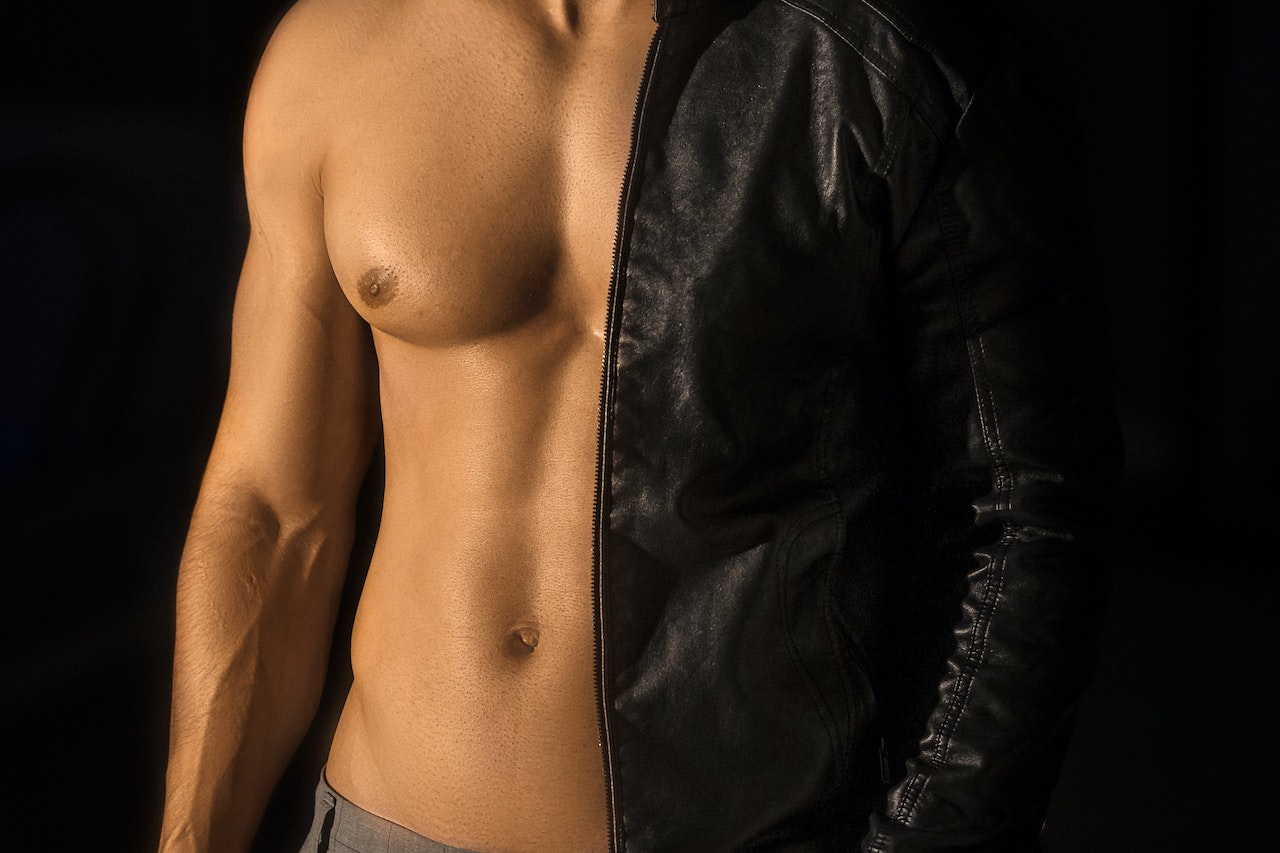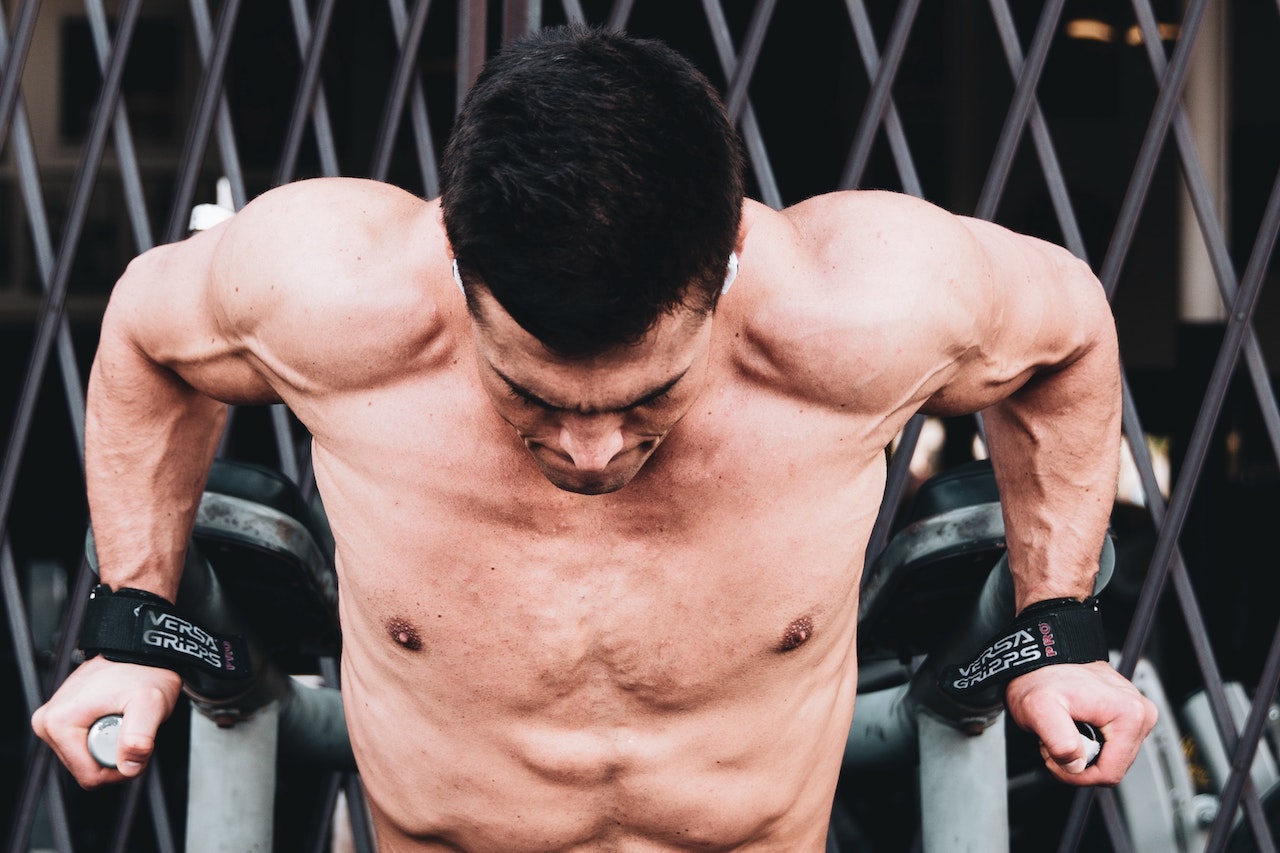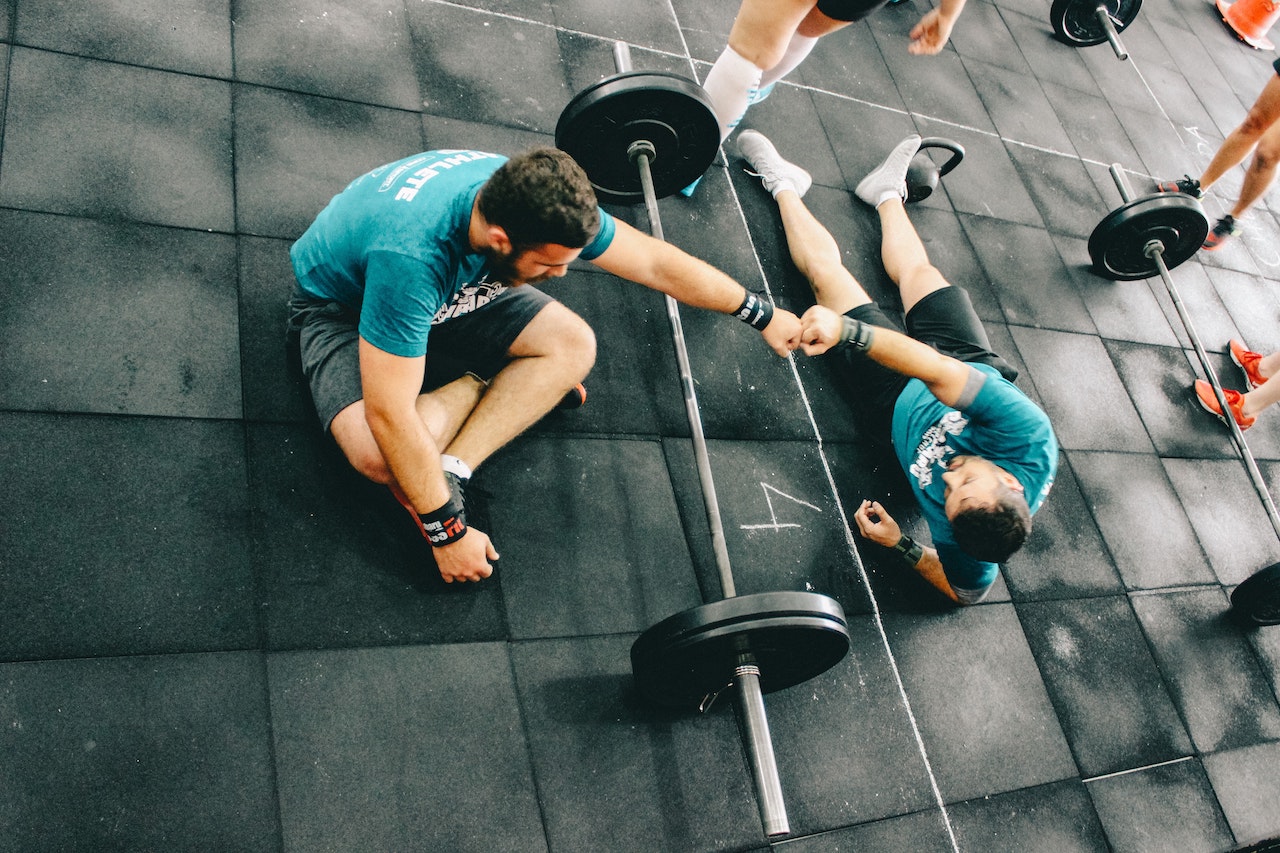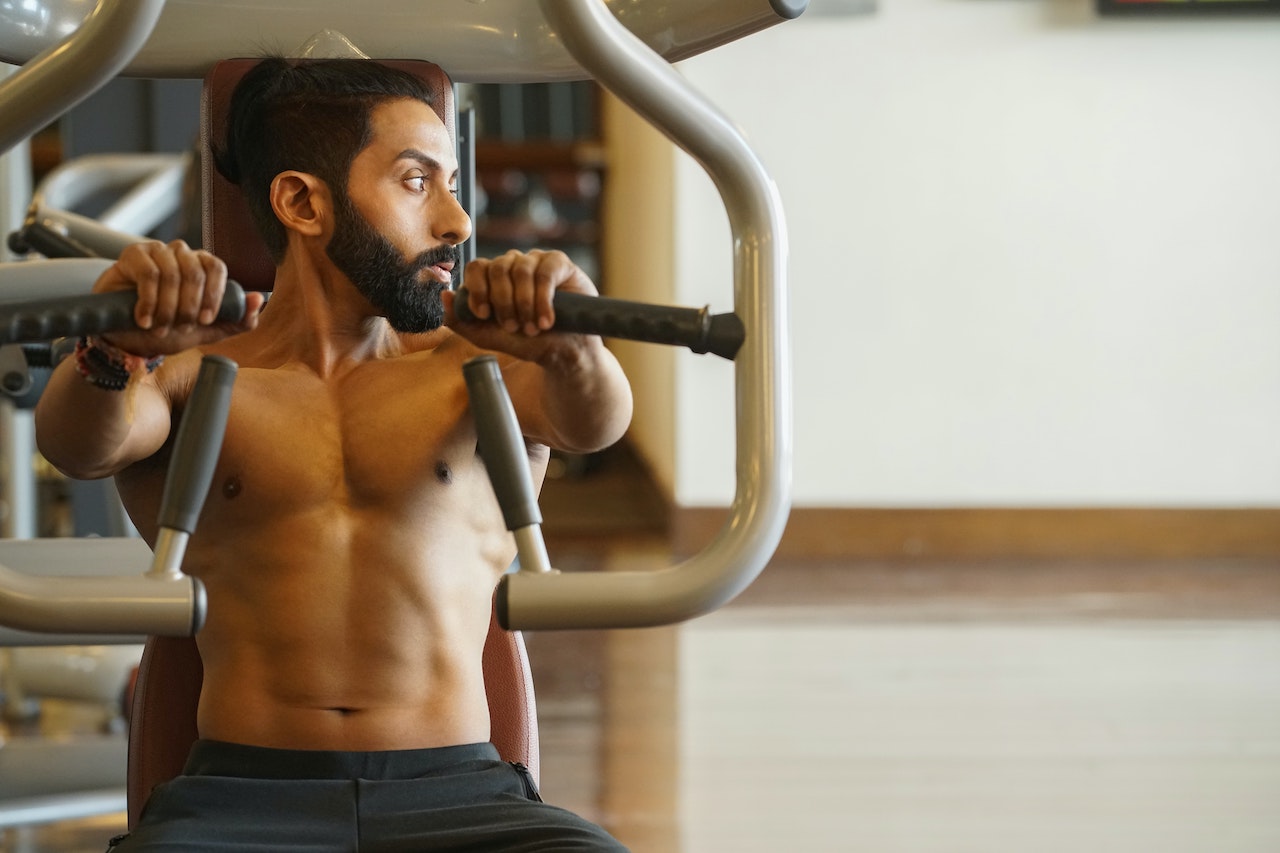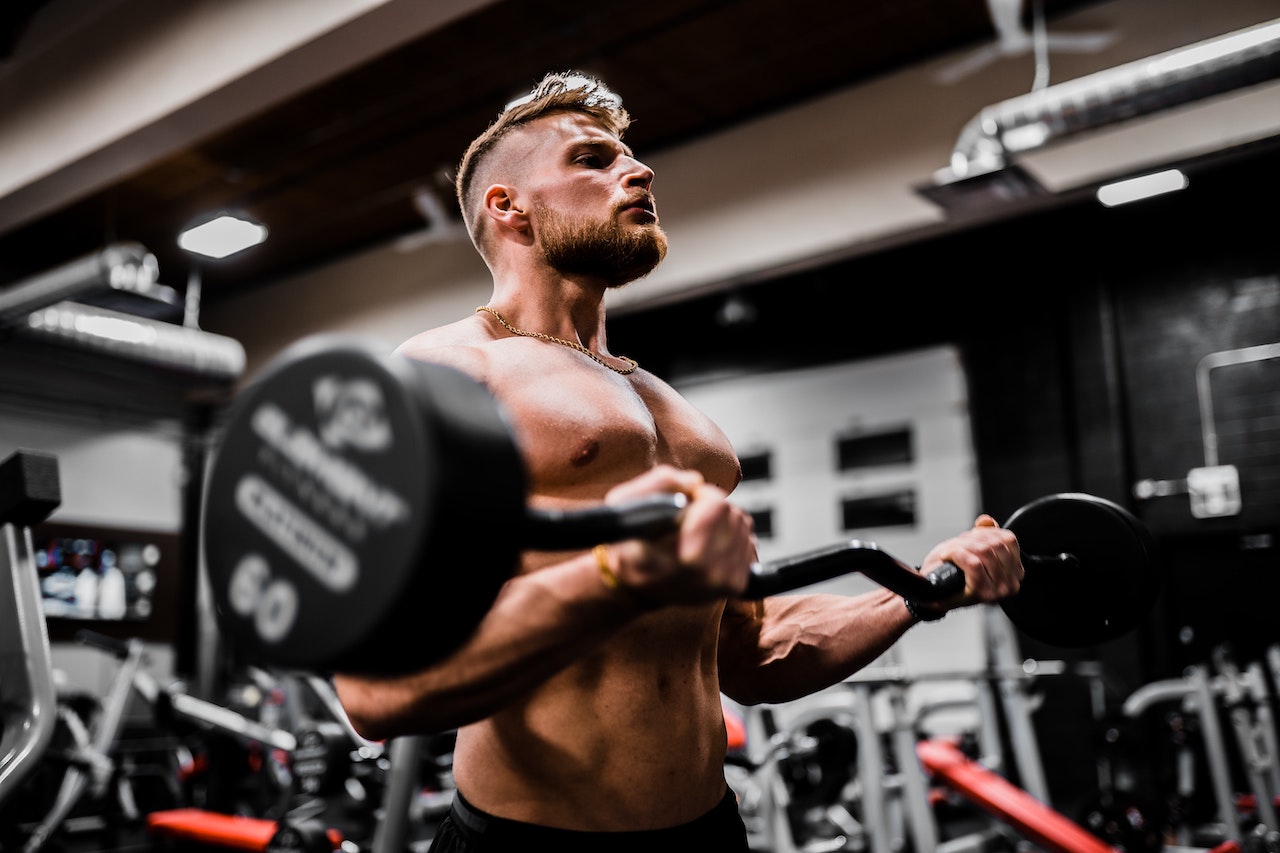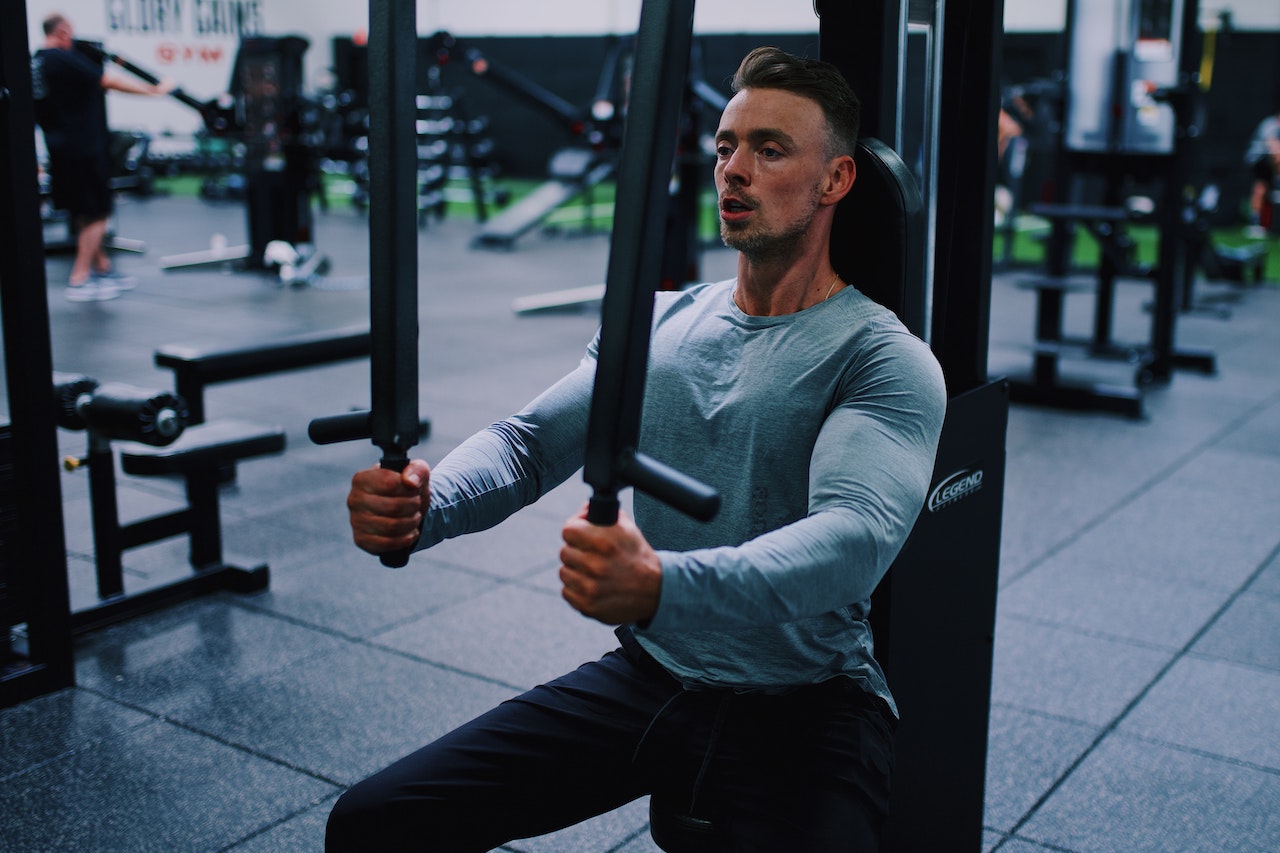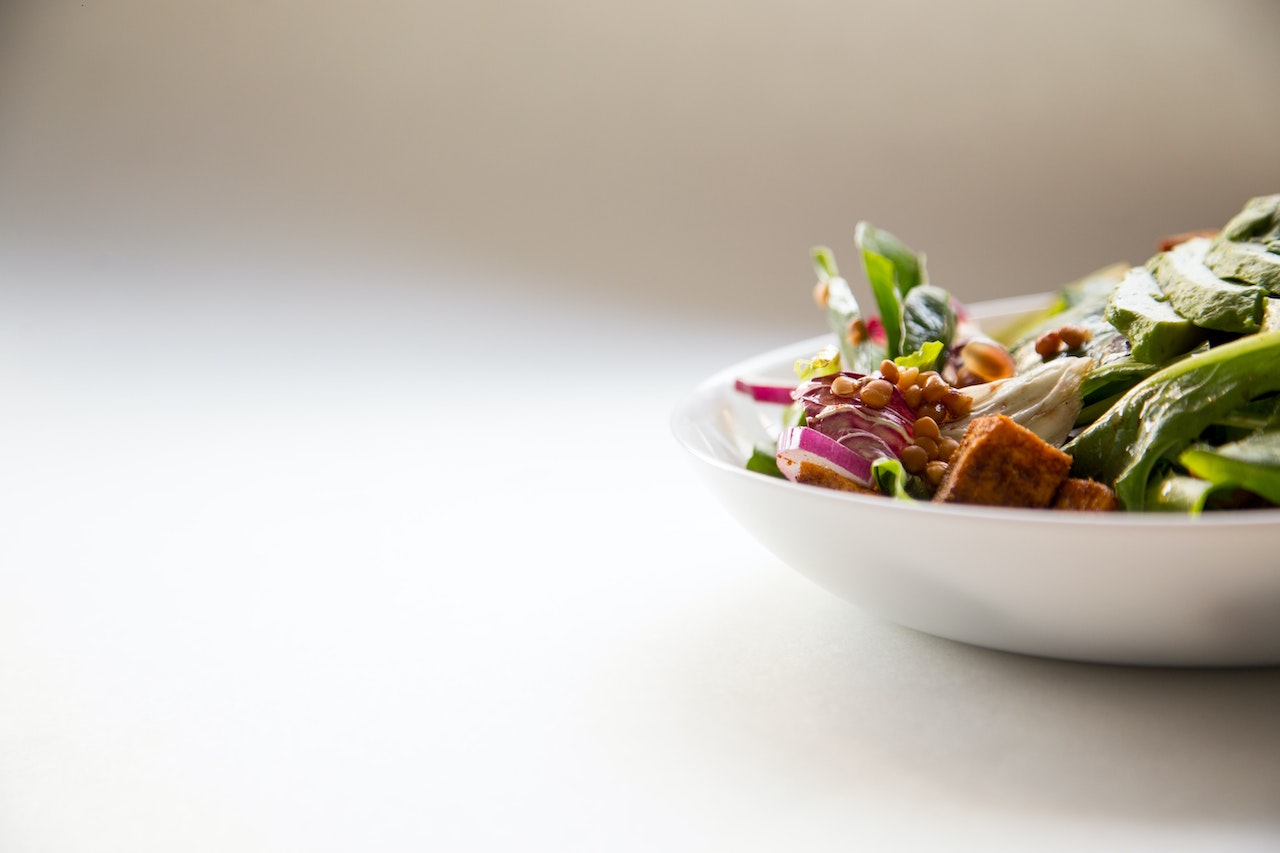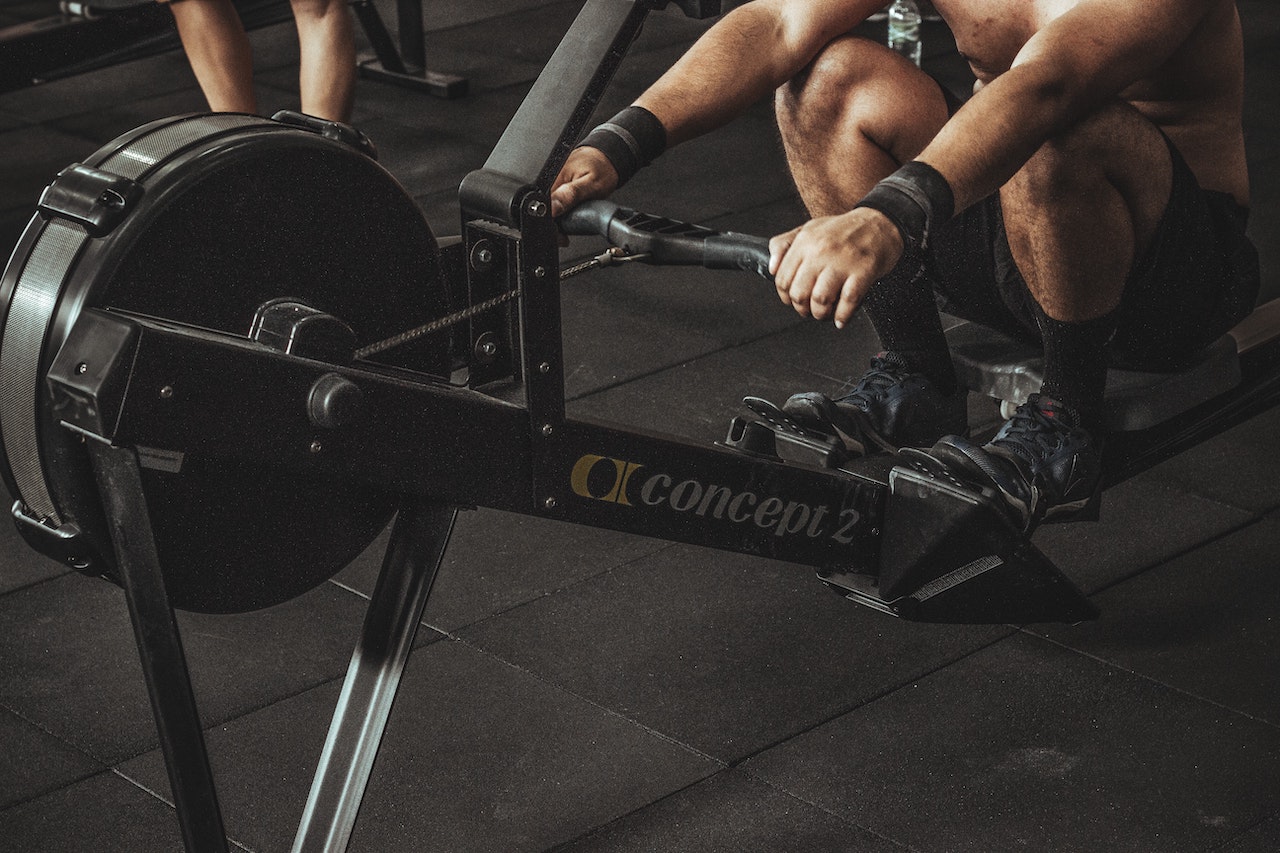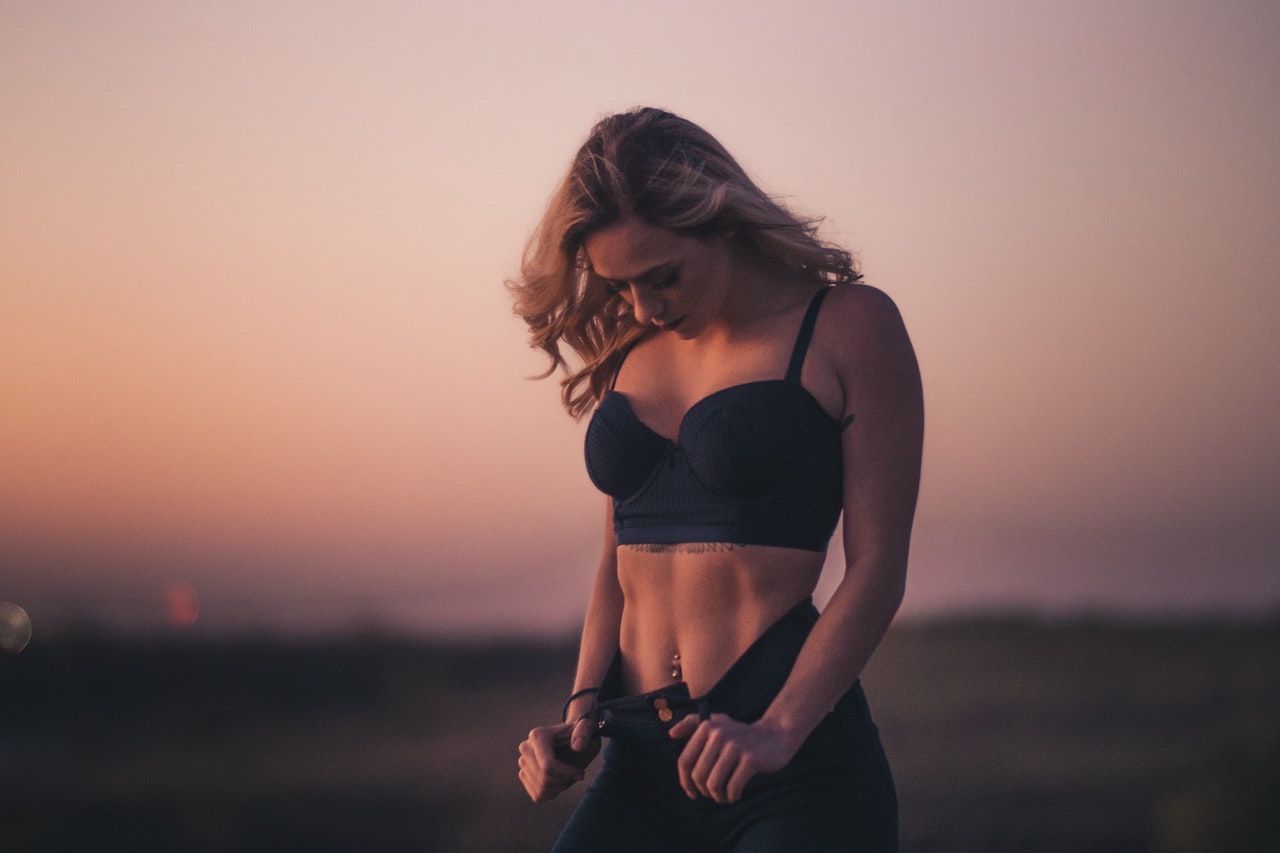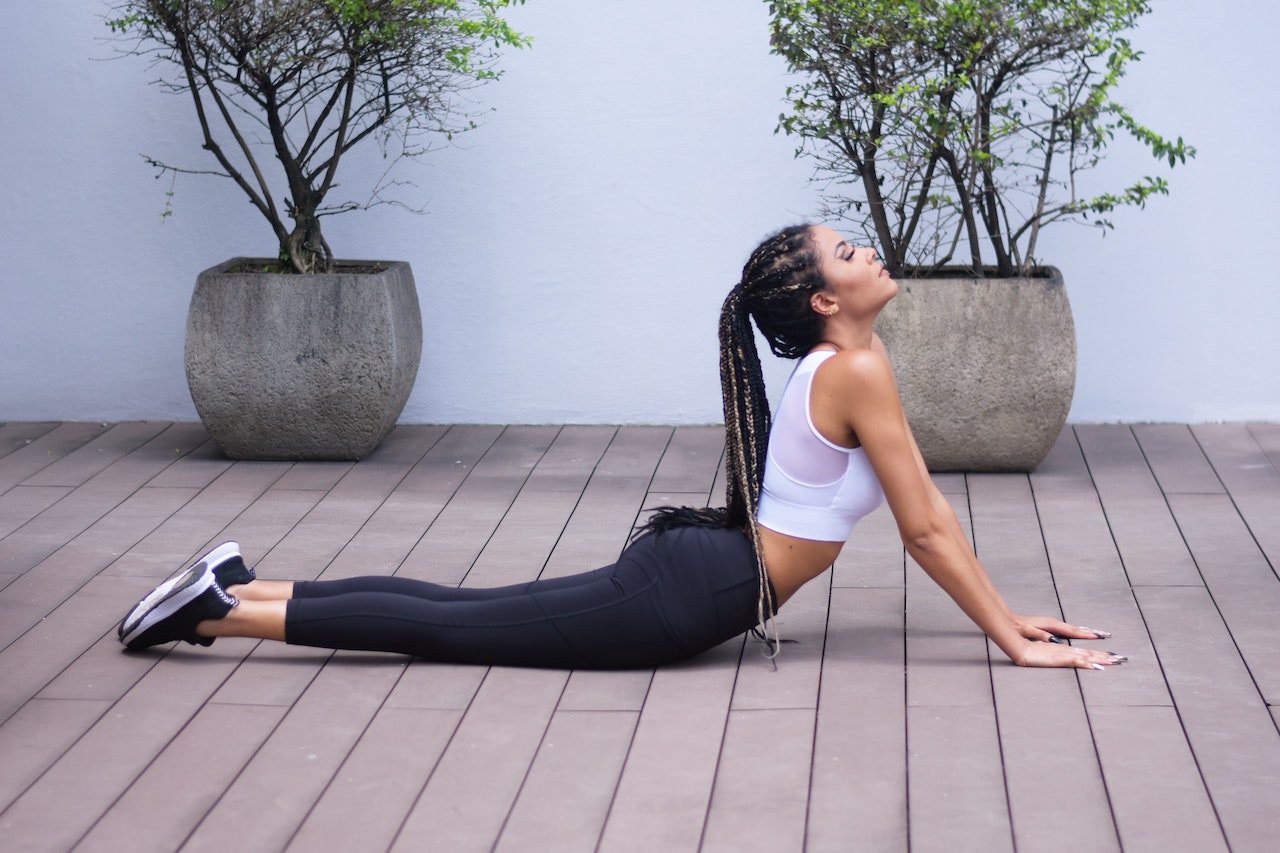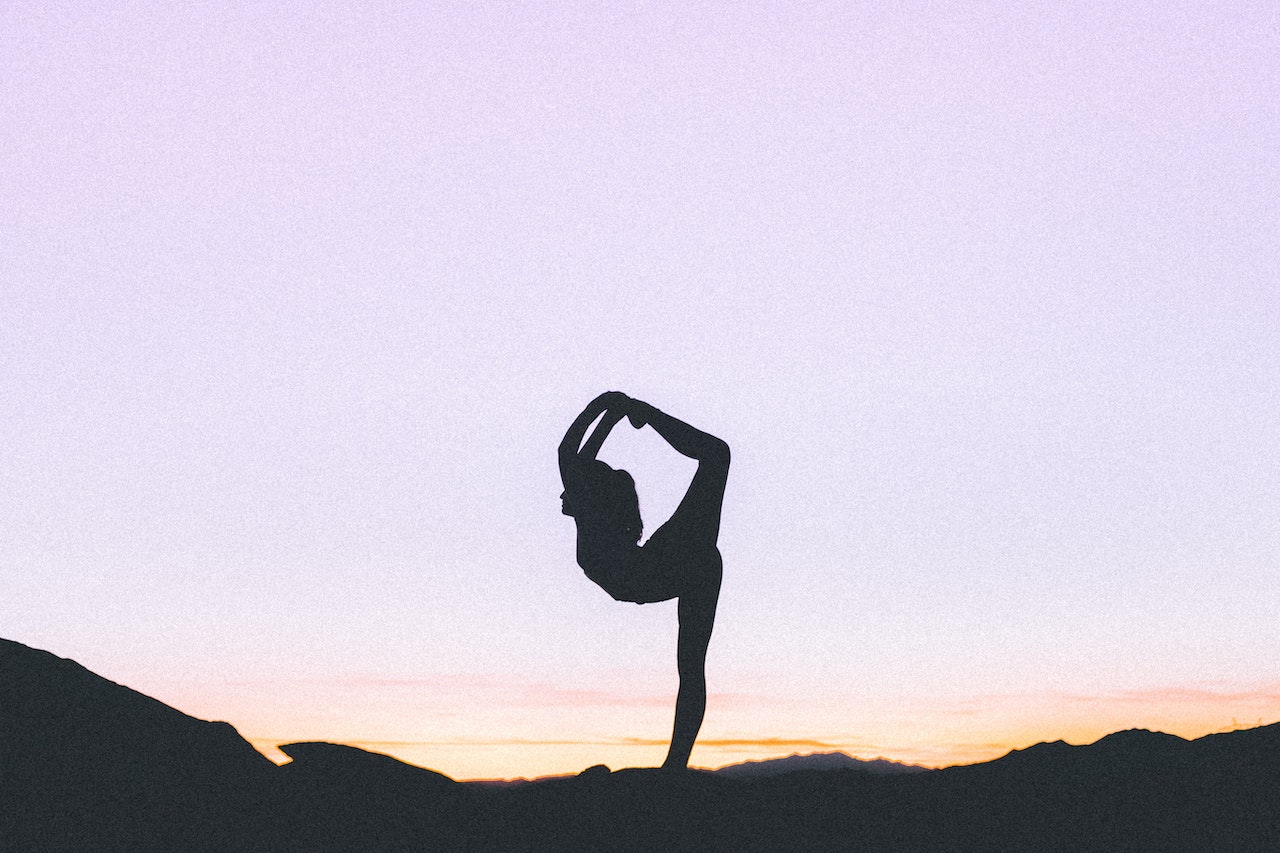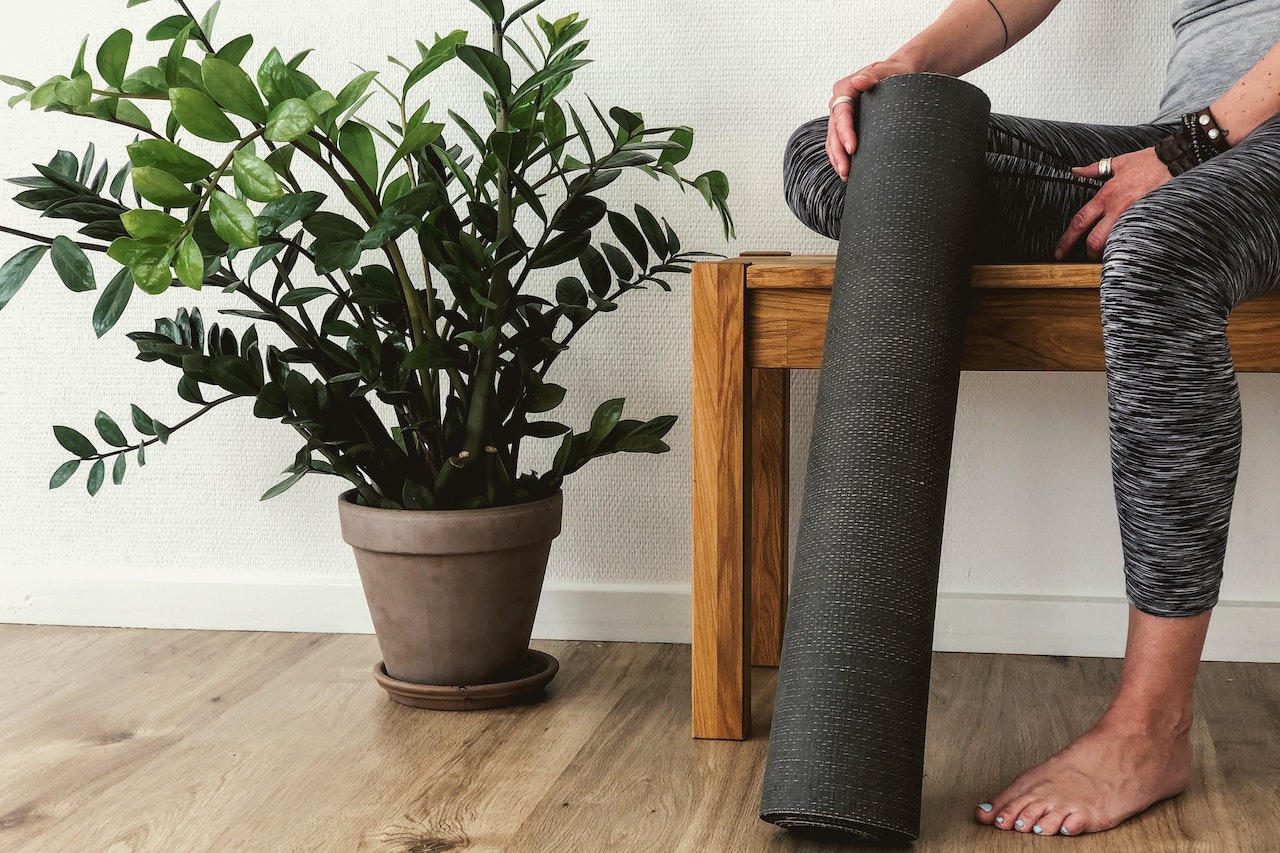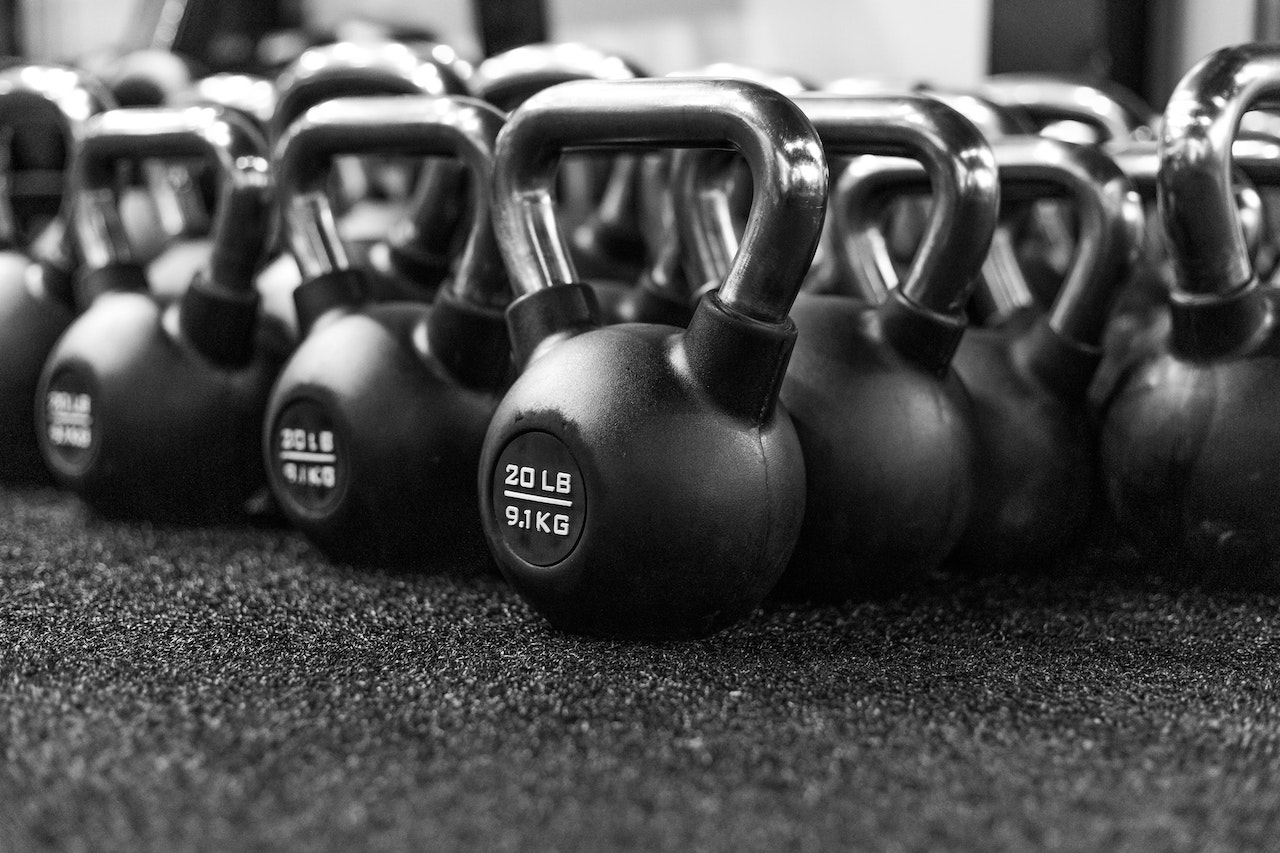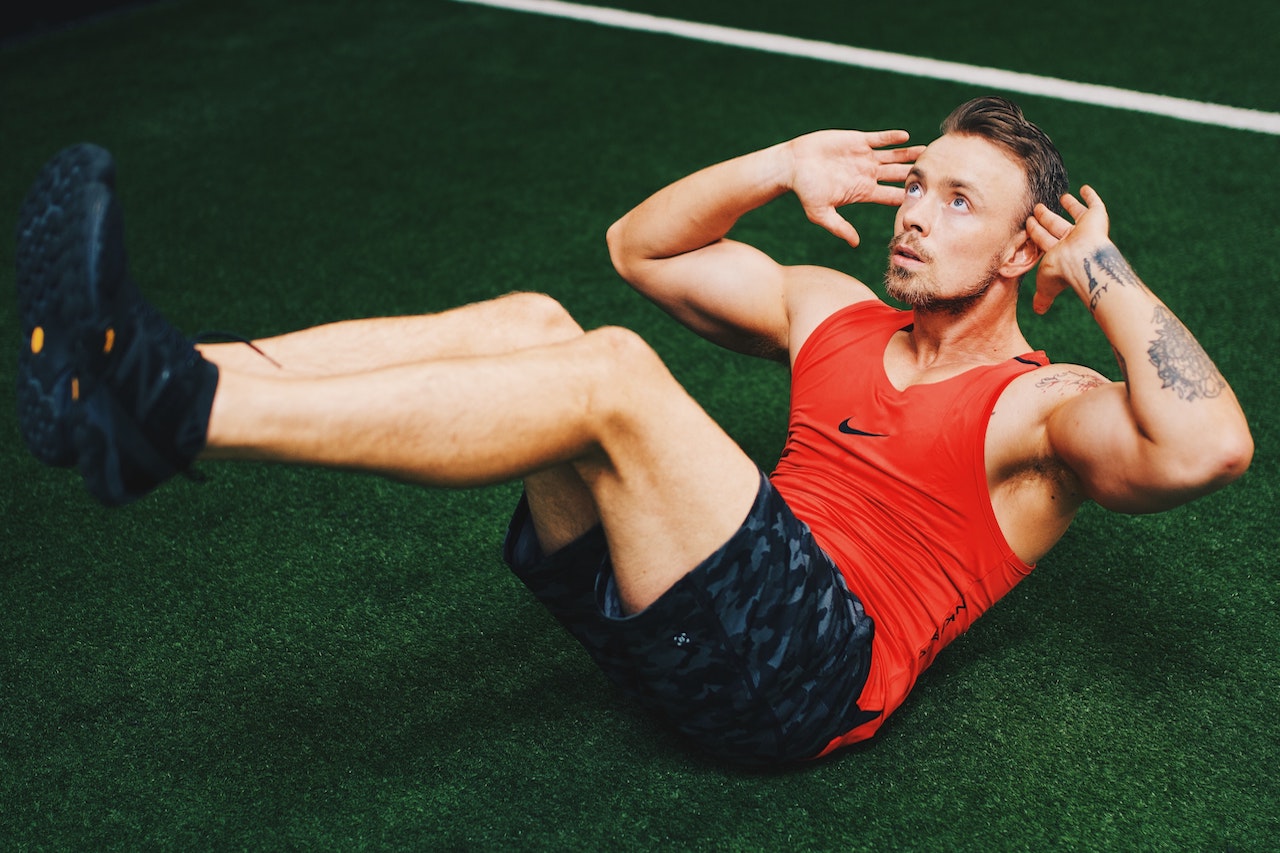for shoulder development, the 'side planks' variation is almost always the first choice. The "Overhead press" And variations are often overlooked.

In the eyes of some olympians and veterans, the 'overhead press' is probably more important than the 'side planks'. Of course, to build the shoulders from multiple angles, you can't afford to lose sight of either. Say goodbye to the monotony of shoulder training, we've put together 10 prime shoulder moves and details for you to add to your programme tomorrow!
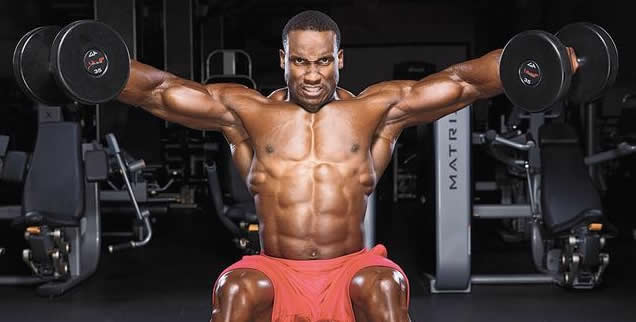
1. Bent arm lateral raises
the curved arm side planks are a great move to work the shoulder muscles, especially the middle deltoid. It also involves the other parts of the shoulder (anterior deltoid and posterior deltoid) as well as the rhomboids (upper part of the back). The difficulty of the movement can be increased when you are sitting on an unstable object. For higher intensity, you can do it standing on one leg.
Sitting on an exercise ball or chair, hold a weight in each hand, bend your elbows at 90 degrees and contract your abdominals. Keeping your elbows bent, raise your arms to your sides to shoulder height. Start at lower back height and repeat 1-3 sets of 10-16 reps.
[tip].
Keep your back straight and contract your abdominal muscles throughout the exercise. Keep the elbows at 90 degrees at all times. At the top of the movement, imagine pouring a jug of water and then fully contracting your shoulders.
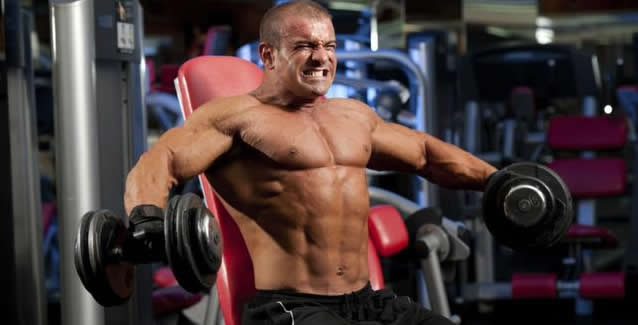
2. Side planks
this type of side planks is more challenging than the curved arm approach described earlier because the arms are straight. The difficulty of the movement increases as your mechanics levers become longer, meaning you may not be able to use the same weight as the curled arm version.
The key to doing the movement correctly is to keep a slight bend in the elbow, but to have the elbow pointing behind you rather than at the ground, which is a common mistake. Do the movement with the elbow drive rather than the hand or wrist.
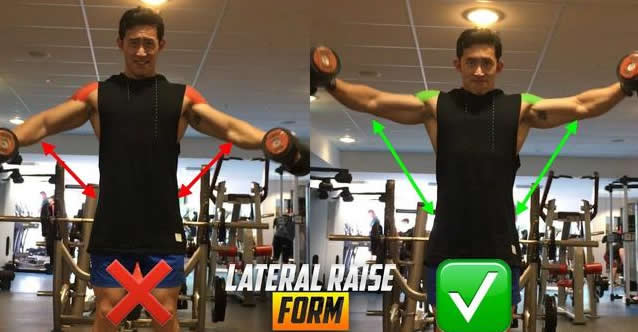
finish in a seated or standing position, lifting the same weight on both sides. Keeping a slight bend in the elbows, lift the arms to the sides, stopping at shoulder height. Starting at lower back height, repeat 1-3 sets of 10-16 reps.
Keep back straight and abdominals contracted throughout the movement. Keep wrists straight and elbows slightly bent.

3. Barbell overhead press
the overhead press is usually the standard movement in most workouts as it stimulates every part of the shoulder, focusing on the anterior and middle deltoid bundles.
It is also a difficult movement because you need to push the weight overhead, so you may not be able to do the overhead press if you have done other movements first. If you want to push larger weights you may need to sit on a bench with a backrest.
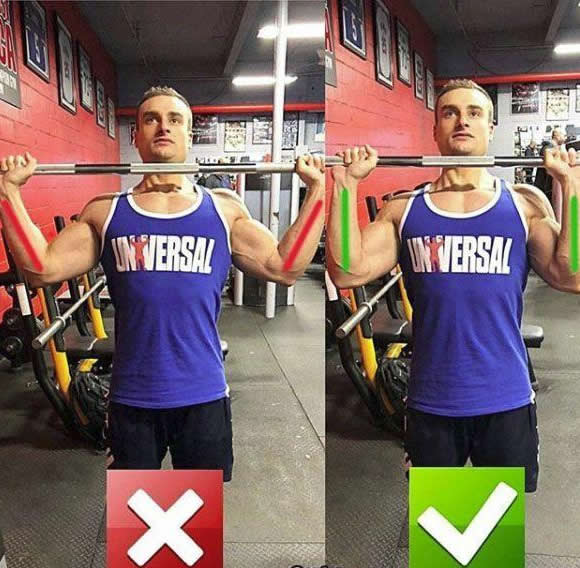
use a medium weight barbell with a grip wider than shoulder width. Start by raising the barbell to forehead height with your elbows bent. Slowly push the barbell overhead without arching your back - keep your abs tight and don't lock your elbows at the top of the movement. Exhale and descend to the lower back before repeating the movement. 2-3 sets of 12-16 reps with 20-30 seconds rest between sets.
[tip].
You may see people doing behind-the-neck push-ups. This movement can strain the rotator cuff muscles and the neck. Keeping the weight in front of your head will stimulate the shoulder muscles more effectively without stressing them.
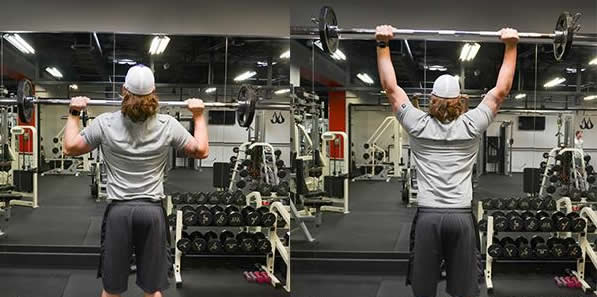
4. Dumbbell overhead press
in this version of the overhead press will use dumbbells to make each arm work individually. You will find this movement really different compared to the barbell push-up.
Start the movement in a seated or standing position with your elbows bent and the dumbbells close to your ears. Push the dumbbells up to the top of your head. Then lower the dumbbells to ear level and complete 1-3 sets of 10-16 reps.
[tip].
Keep your abs tight and don't arch your back as you push upwards. When you push up, bring your hands slightly forward rather than straight up and down, as that will tend to arch your back. If you are using a lot of weight, try doing this in a seated position on a bench with cushions.
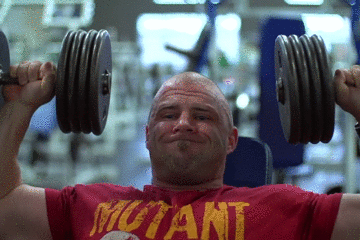
5. Alternating overhead press
this variation on the traditional overhead press gives variety and challenge to the exercise. By alternating the push-ups instead of pushing up at the same time, you increase the challenge of the movement - one arm has to hold position while the other arm pushes up, which makes the movement more difficult.
In addition, your abs and back will work to assist the movement and keep your body stable, so your core will get an extra workout.

start the movement in a seated or standing position with your elbows bent and the dumbbells close to your ears. Push your right arm up overhead while keeping your left arm still. The abdominal muscles fire to keep the body as well as the rest of the body stable. Lower the right arm, keeping it in place, and raise the left arm above the head. Continue alternating movements, completing 10-16 reps (each side) for 1-3 sets. Be sure to keep your movements slow and controlled and avoid using momentum.
[tip].
Keep your abs tight and do not arch your back as you push upwards. The weight you use may be lighter than a traditional overhead press, keeping the movement controlled. If you're using a lot of weight, try doing this in a seated position on a cushioned bench
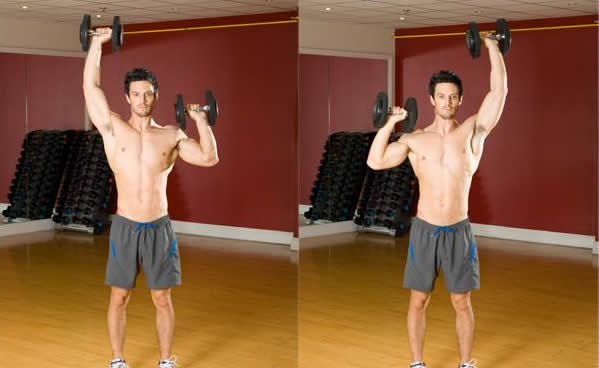
6. Arnold push-up
another traditional variation of the overhead press is the arnold press, which requires you to rotate your arms as you push the dumbbells overhead.
This may seem like a small variation but it adds to the challenge of the movement and it's a great way to vary your shoulder workout. This movement targets the anterior and middle bundles of the deltoids and also includes the triceps.

start the movement in a seated or standing position with your elbows bent in front of your body and your palms facing your chest. As you push your arm upwards, rotate your hand outwards. At the top of the movement, the palms should be facing outwards. Rotate your hands back to the starting position as you lower the dumbbells. Repeat 1-3 sets of 10-16 reps each.
[tip].
Keep your abs tight and don't arch your back as you push up. If you're using a lot of weight, try doing this in a seated position on a cushioned bench

7. One-arm overhead press
another variation of the traditional overhead press is the one-arm push-up, which adds a balance challenge and also involves the abs and back to help stabilise the body. This movement is another way to change up the shoulder workout and train the sides of the body separately, making them more independent.
To start the movement in a seated or standing position, hold a light to medium weight dumbbell in your right hand. Bend your elbow and lift the weight so that it is close to your right ear. As you push the dumbbell upwards, the abdominal muscles fire to stabilise the body. Lower the dumbbell and repeat 1-3 sets of 10-16 reps. Repeat the movement with your left arm.
[tip].
Keep your abs tight and do not arch your back as you push upwards.
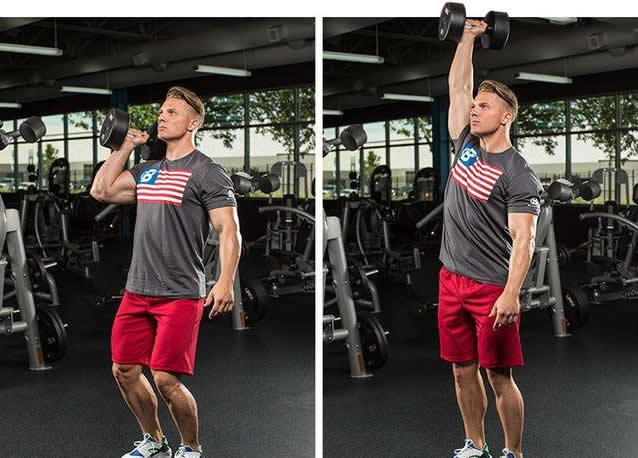
8. Elastic band shoulder external rotation
as well as working the deltoids, you need to work the smaller muscles within the rotator cuff. These small internal muscles act as stabilisers and also help to rotate the shoulder outwards. This rotation is a common movement in many workout routines as well as in strength training exercises such as the arnold push-up described above.
Keeping your rotators strong will help keep you injury free. If you have any problems with your shoulder, check with your doctor before attempting this movement. The rotators can be easily injured, especially if the muscles are tight, so be careful if you are going to do this movement. This movement particularly targets the lesser circular and infraspinatus muscles.

wrap an elastic band around a stable object and the other end around your hand to pull the band tight. In a standing position, the left side of the body faces the elastic band, which is held in the right hand. The starting position is with the elbow bent at 90 degrees and the palm of the hand and forearm directly in front of the abdomen. Keeping the elbow bent, rotate the shoulder and rotate the arm to the other side. Move within the range of your joints - you may not be able to rotate your arm fully. Rotate the forearm back to the initial position and repeat 12-16 times
[tip].
Keep the elbow in a fixed not understanding, slow and controlled movement. Avoid rotating the arm too far - just be flexible in your movements. This is a subtle and sensitive movement. Take your time and really feel what muscles you are training.
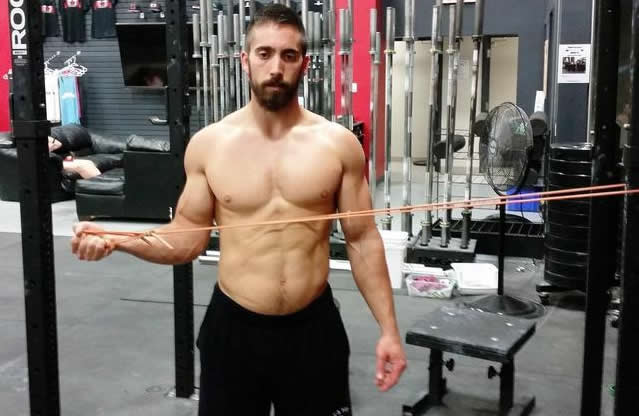
9. One-arm back-bound side planks
this movement targets the back bundle of the shoulder and the upper back. Exercising one arm at a time, this will also challenge the core and balance of the body. This variation also involves a side straddle, which adds more movement (and more muscle).
In this movement, you need to start with light weights so that you can master the correct posture.

start in a wide stance with a dumbbell in your right hand and your left hand on your left thigh. Flex your hips, bend your torso forward, keep your back flat, contract your abs and dangle the dumbbell towards the floor. Lunge to the right while raising the arms to shoulder height, keeping a slight bend in the elbows. Do not shake the dumbbell, but lift it up in a controlled manner. Lower your arm while lunging to the other side. Repeat 10-16 times before switching sides.
[tip].
Do not lift your body during the side planks. Raise the dumbbell to shoulder height, squeezing the upper back and back shoulder. Keep the movement slow and controlled and try not to borrow momentum.
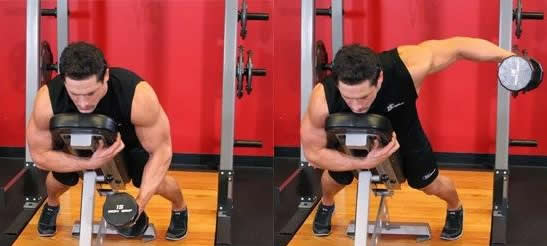
10. Front planks
because the shoulders have three heads (front, middle and back), you want to target these three heads. The front planks target the front fasciculus, although it also involves the other shoulder regions.
For this movement, you may need lighter weights - your arms are straight so that the mechanics levers will be long and, therefore, more challenging.
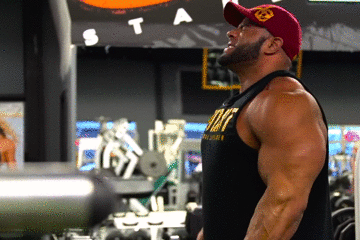
hold a light to medium weight dumbbell in both hands with your arms naturally down and palms facing your thighs. Slowly raise your arms to shoulder height, keeping a slight bend at the elbows. Exhale and lower the weight. This exercise can also be done with a light barbell or, if you are using a heavier dumbbell, you can alternate arms. Repeat 1 to 3 sets of 12-16 reps with 20-30 seconds rest between sets.
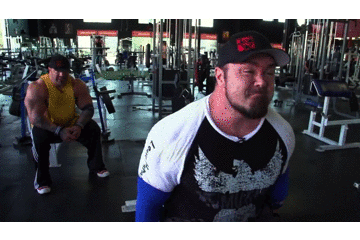
for the above movements, you can adjust the training sequence to suit your habits or even combine supersets. Pay attention to the details of the movements and don't sacrifice quality for weight, pumpkin shoulders are just around the corner.

